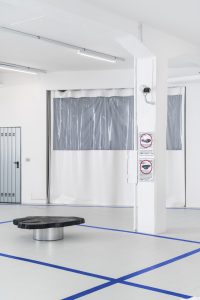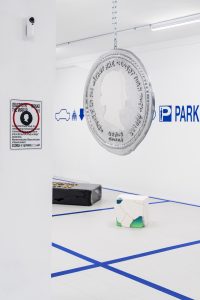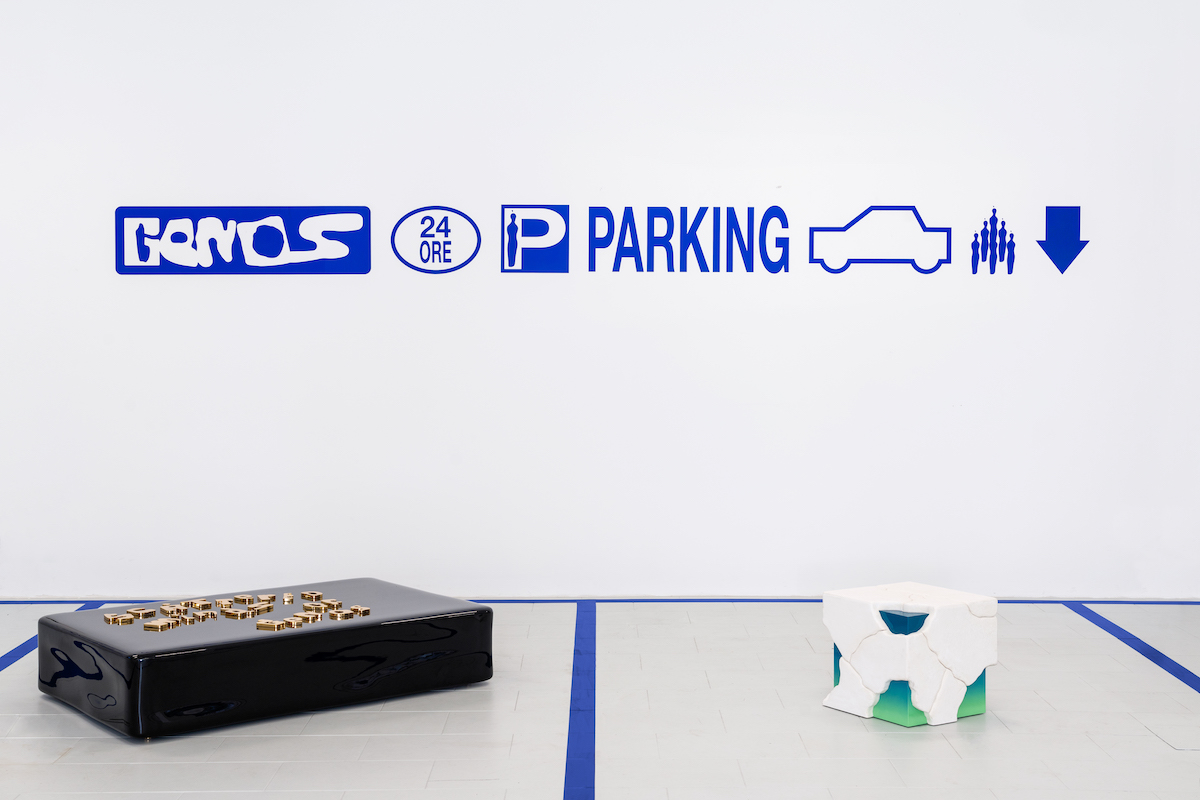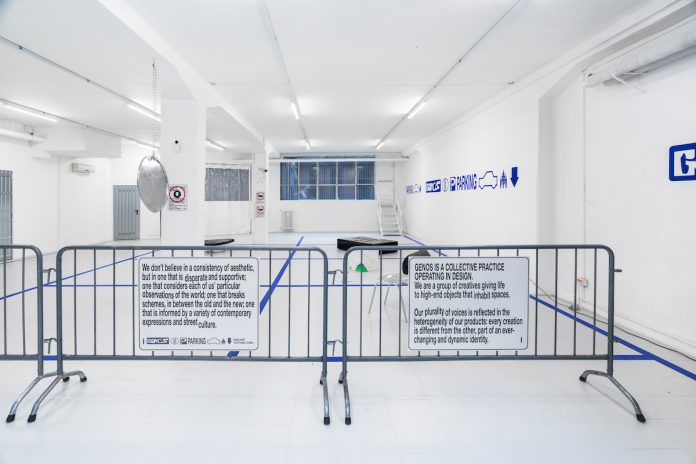We don’t know who they are, their faces, or their names. Catching up to them was a real challenge – the only way to make contact was a chat on WhatsApp. But it is precisely this mystery that makes them and their creations fascinating, breaking out of the boundaries of design to enter the more nuanced field of art. They have taken the names of Monade n.6, Monade n.8, Monade n.22, Monade n.500, and Monade n.11 (the founder), but these ethereal presences are many, many more. Together, they form the group Genos, which recently made its debut on the scene in Milan with its first collection, Edition One, and a site-specific installation at Spazio Fonte.

He seems to appear out of nowhere and in this limbo he lingers, between physical reality
It seems to have come out of nowhere, and it remains in limbo between physical reality and the intangible realm of the imagination. Genos ha immediately captured the attention of the audience with its magnetic charm. The group is an anomaly, against the current, almost revolutionary: the works, not their makers, do the talking, since the identities are never revealed and express themselves as a single voice. The works are the result of authentic creativity, disconnected from utility or purpose, other than a pure expression of inner life and thought. “We like to concentrate on what we design and we therefore urge everyone to observe the objects, not the people behind them – Monade n.11 explains in the chat. – We do, however, reveals something of ourselves in every piece, each in its own way: every creation aptly describes whoever designed it and what they would like to communicate.”


The multiplicity of the individuals emerges here, in the resulting design: heterogeneous products, reflections of the different backgrounds of each Monad, which surprisingly find a perfect counterpart in the guiding ideology. This is also due to long-term friendship – the only “personal” detail we were able to obtain. “Some of us have been doing this job for a lifetime, others for a shorter period, but some of us usually do something completely different. Design, however, is an excellent channel of communication, so it has attracted many of us to this initiative that spans various disciplines, themes and interests, like the pieces of a puzzle.”
The first collection, Edition One, is thus based on careful reflection on contemporary society, taking the form of one-offs. Like the chair “How Dare You” which embodies the awareness that each individual has a multi-personality; or the coffee table “Scattered Minds,” an invitation to grasp defects and instead of simply accepting them, to see them as advantages. Then there is the mirror “Objects in the Mirror Are Closer Than They Appear,” a self-portrait of the Monads of Genos, visible amidst shadows and reflections. Not to mention the coffee table “Post Humanity” which stems from observation of the streets of Milan: the surface of the table is like the asphalt that bears the vague signs of those who have treaded it, and thus of humanity. Finally, the “Future” stool is made in stone: a symbol of the new that makes a break with the past.

Observation of the world has guided Genos along this path of experimentation and artistry, where meaning prevails over aesthetics, which arrive in a second phase. “None of us is indifferent to what happens in the everyday world. We know very well that people can survive without another chair or table, but we hope that our creations can serve some purpose.” Inside a domestic setting, as furniture or as food for thought.
Edition One was presented inside Spazio Ponte with an installation that replicates the situation of an underground parking garage, where the various pieces in the collection are arranged like parked cars. The graphic design and visual identity of Genos have been developed by Studio Temp.
Photo © Piercarlo Quecchia, DSL Studio







